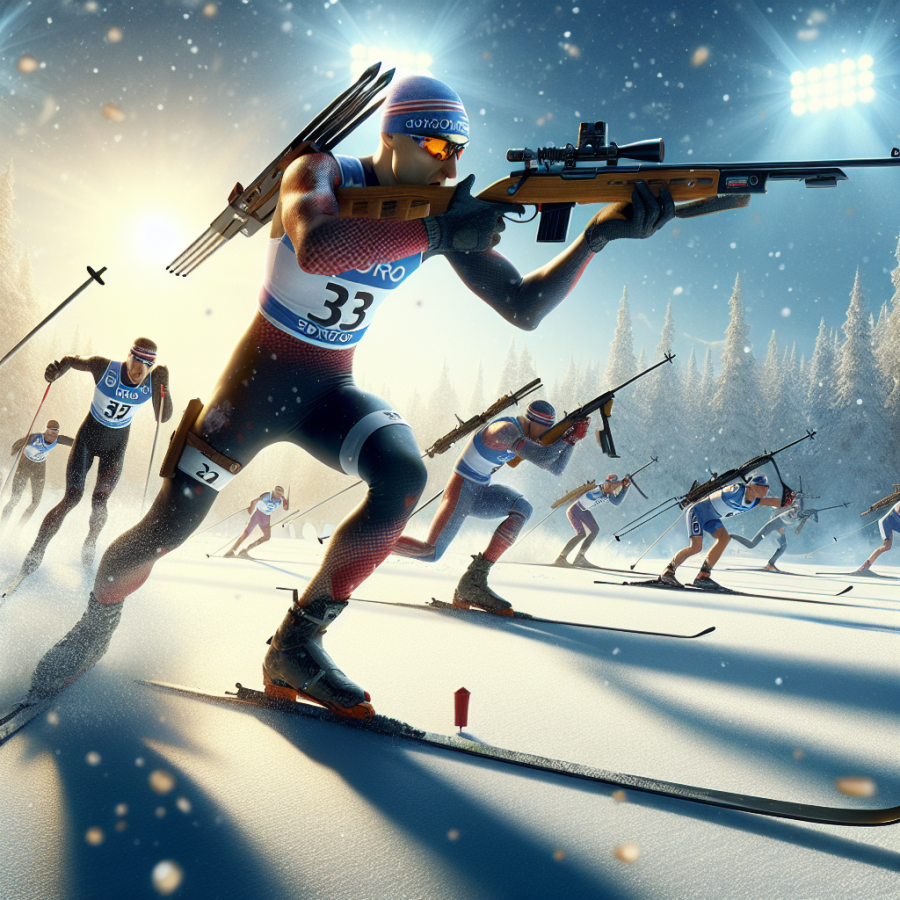The Rigorous Training and Exceptional Discipline: The Core of Biathlon Success
A biathlon, traditionally known as a competition that combines cross-country skiing with rifle shooting, requires intense physical conditioning and precision shooting abilities. The success of a biathlete hinges on the convergence of these two seemingly disparate skills: intense physical endurance and pinpoint shooting accuracy. This unique sporting event requires not only rigorous training but also exceptional discipline, which are the core tenets of biathlon success.
Rigorous Training: The Physical Demand of Biathlon
Rigorous training is paramount in the world of biathlon. Athletes must maintain peak physical condition to traverse the challenging cross-country skiing portions of the competition. This requires strong cardiovascular endurance, muscular strength, as well as exceptional agility and balance.
Cross-country skiing alone demands a lot from an athlete. It requires the use of the body's largest muscle groups—the legs and core—in a cyclical, rhythmic motion that taxes the muscular and cardiovascular systems immensely. To cope with these demands, biathletes must stick to stringent training regimens focusing on endurance workouts and strength training.
Moreover, recoveries are also crucial. Biathletes must be able to recover quickly from their exertion to steady their breathing and heart rate for the shooting portion of the competition. This includes wind sprints, high-intensity interval training, or other workouts designed to improve recovery times and cardiovascular efficiency.
Exceptional Discipline: The Art of Shooting in Biathlon
Apart from rigorous training, biathletes should also cultivate exceptional discipline, particularly during the shooting section of the biathlon. Generally, the shooting rounds interrupt the skiing portions, requiring athletes to calm their breathing and steady their focus amidst high physical stress. This shift from intense physical activity to a state of calm and focus demands an incredible amount of self-control and discipline.
Shot accuracy is a crucial component in biathlons. Each missed shot usually equates to additional distance or time added to the competitor's total. As such, biathletes spend countless hours practicing their shooting, honing their precision, and training their minds to switch from an intense physical state to a calm, focused one.
The ability to maintain composure, focus and make accurate shots after intense physical exertion is where the discipline of a biathlete truly shines. It involves consistent practice, psychological conditioning, and the development of a deep inner calm.
Consequently, the mental discipline also extends beyond the competition. It encompasses training routines, nutrition, rest, recovery, and psychological readiness.
Read also:
Breaking Down the Differences: Are Soccer and Football Really the Same?
The Exhilarating Challenge of Biathlon: A Look Into the Blend of Endurance and Aim
Biathlon is a winter sport that captures the delicate balance between power and precision. It presents two completely opposite skillsets: on one hand, high-intensity cross-country skiing; on the other, the controlled steadiness of rifle shooting.
What makes biathlon so extraordinary is its pulse-pounding dichotomy. It creates an incredible contrast that both amazes and bewilders those who encounter the sport for the first time. The ability to transition from heart-racing skiing to precise, focused shooting is a unique and tantalizing aspect that sets biathlon apart from other Olympian trials.
Biathlon first challenges its athletes with an incredibly draining cross-country ski race. During the ski portion, athletes strap on narrow, lightweight racing skis and push themselves over long distances, usually ranging from 7.5 km to 20 km depending on the race format. The skiing is done in a style called “freestyle” or “skate” skiing, an aggressive, high-tempo method that asks for utmost muscular endurance and aerobic capacity.
What’s unconventional about biathlon is what follows next - the shooting range, where the athletes must quickly switch gears. They transition from the exhaustive race to a careful, controlled setting. Each time they reach the rifle shooting portion, competitors have to ski into the range, un-sling their rifles, and hit five targets located 50 meters away. For each target missed, stiff penalties ensue.
Combining these two disparate disciplines in one sport requires an exceptional level of skill and training. This is particularly significant when we consider the fact that biathletes must calm their racing hearts immediately following the strenuous ski portion just before they engage in the precise shooting phase. Shooting with a rapid heartbeat can rock the rifle, causing shots to stray off target. The skiing part of biathlon is about pushing to your physical limit, while the shooting is about regaining control, steadying your heart rate, calming your breathing, and taking accurate shots.
Biathletes go through intense physical and psychological training before partaking in the sport. Their training includes, but is not limited to, improving cardiovascular and muscular endurance, learning accurate shooting techniques, and perfecting their ability to control their mind and body while under extreme pressure.
The competition format of biathlon adds to the spellbinding thrill of the sport. Penalties for missing a target can take several forms.




